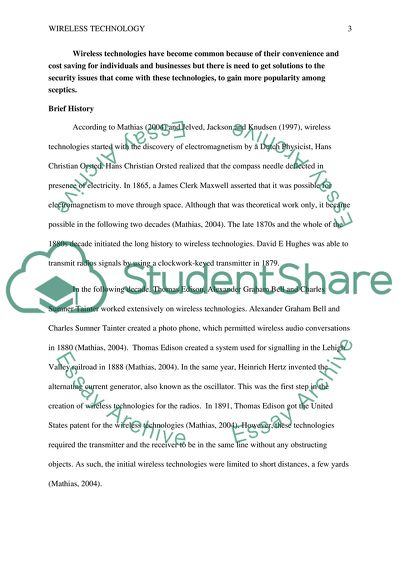Cite this document
(Wireless Technology Essay Example | Topics and Well Written Essays - 2250 words, n.d.)
Wireless Technology Essay Example | Topics and Well Written Essays - 2250 words. https://studentshare.org/information-technology/1808475-wireless-technology
Wireless Technology Essay Example | Topics and Well Written Essays - 2250 words. https://studentshare.org/information-technology/1808475-wireless-technology
(Wireless Technology Essay Example | Topics and Well Written Essays - 2250 Words)
Wireless Technology Essay Example | Topics and Well Written Essays - 2250 Words. https://studentshare.org/information-technology/1808475-wireless-technology.
Wireless Technology Essay Example | Topics and Well Written Essays - 2250 Words. https://studentshare.org/information-technology/1808475-wireless-technology.
“Wireless Technology Essay Example | Topics and Well Written Essays - 2250 Words”. https://studentshare.org/information-technology/1808475-wireless-technology.


